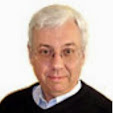Harkness Ratings for the Swiss System
Continuing with The Harkness System Explained, in that post I used excerpts from Harkness's own writings in Chess Life (CL), more than 65 years ago:-
[Harkness, CL 1952-05-20] was the first in a series of eight articles under the title 'How the Rating System Works'. [...] The last two articles in the Harkness explanation of his rating system described rules for rating a Swiss System. I'll cover that in my next post in this series.
1952-08-20: '7. Rating Swiss System Tournaments' • In this post, I'll look at those last two articles.
To rate a Swiss System event we evaluate the performance of each player as though he were competing in an independent tournament. No contestant plays against the same set of opponents as any other contestant, so we must measure the strength of the competition each player meets. We do this in the same way as we determine the average strength of a round-robin tournament -- by listing the ratings of a player and all his opponents, then finding the median value. This value is called a player's "competition average." Then we compute performance ratings as described in parts 5 and 6 of this series, adding or subtracting points from each player's competition average in accordance with his score.
The process of rating Swiss System tournaments is summed up in the above paragraph, but a great many of the details have been omitted. For the sake of those who want to know exactly what we do, this article and the next in the series are devoted to a fuller explanation. If you find the description too boring to read, you will have to take our word for it that we go to a lot of trouble to achieve a high degree of accuracy.
Perhaps the simplest way to explain the process is to describe the various steps in detail, using the recent U.S Open Championship as an example.
1. After correcting the usual mistakes in the round-by-round analysis of the tournament report, and after cancelling all byes and defaults, we list down on our work-sheet the names of all players and their net scores. By net scores we mean the points won and lost for games actually played. Although the U.S. Open was a 12-round event, some of the contestants played less than 12 games.
2. The second step is to write down what we call the "work-sheet ratings" of all players whose performances during the previous five years have been recorded on cards in the active files. Each player's rating is written after his name. As described below, some ratings are taken from the records of rating one tournament. [...]
3. The third step is to issue performance ratings to the unrated contestants. so that these figures may be used to find the competition averages of the rated contestants. The process is complicated and consists of three operations: [...]
Harkness introduced his next article with a visual overview of his calculations.
U.S. Open championship, Tampa 1952; Average: 1980
(Column Headers:)
No.,
Player,
Net Score,
Last Avg.,
Work-Sheet (1 & 2),
Competition,
Performance
1952-09-05: '8. Rating Swiss System Tournaments (continued)'
In the seventh article of this series we started a description of the various steps that are taken to rate a Swiss System tournament, using the U.S. Open of 1952 as an example. In the present article we continue the explanation.
4. The fourth step of the process is to issue performance ratings to the players with provisional ratings. This is done as a separate operation so that we may correct the work-sheet ratings of these players before tackling the fully-rated contestants.
When a player has never before competed in a rated event we have to accept the performance as the only available indication of his ability; but we can do something about correcting a possible error in the figure used to represent the strength of a player who has competed in one previous tournament. What we do is to average his provisional rating and his performance rating, then substitute this new figure in the column of work-sheet ratings. We use this corrected rating when finding the competitive averages of his opponents [...]
5. As the final step, we issue performance ratings to the fully rated contestants in the tournament. As a result of the work done up to this point we now have a column of work-sheet ratings that is more accurate than our original list. (The final list is column 2 of the work-sheet ratings in the table above.) We have done all that we possibly can to make sure that the performances of the players with established ratings will not be distorted by mistakes in the ratings of their less experienced opponents. [...]
In that series of eight articles written in 1952, Harkness went to great lengths to describe the mechanics of his system. I've left out (indicated by '[...]') most of the detail and all of the examples. He also considered the use of ratings to produce Swiss System pairings. In the next post in this series, I'll look at his thoughts on pairings.



